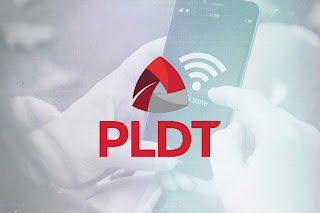CDP, previously known as the Carbon Disclosure Project, is a renowned global disclosure system that enables investors and other stakeholders to measure and track the environmental performance of companies, cities, and governments, particularly in areas of climate change, deforestation, and water security.
Entities are independently assessed and scored from F as the lowest to A as the highest based on voluntary responses to CDP’s questionnaire. A score of B means that the entity has systems, policies, and strategies in place to drive environmental management.
“As we navigate through environmental challenges that impact our business and stakeholders, this rating affirms PLDT’s approach of aligning with global standards and adopting operational strategies that aim to foster long-term growth and contribute to planetary solutions at the same time. We are thus keen to continue leveraging environmental management to support parallel business imperatives, particularly on innovation, operational efficiency, and customer experience,” said PLDT and Smart Chief Sustainability Officer Melissa Vergel de Dios.
Addressing climate-related risks, opportunities, and impacts
PLDT identifies climate change as one of its top enterprise risks. The company supports the goals of the Paris Agreement and the global ambition to achieve Net Zero by 2050 through its decarbonization roadmap that targets a 40% reduction of Scope 1 and Scope 2 greenhouse gas (GHG) emissions by 2030.
In its 2023 Sustainability Report, PLDT expanded reporting of its Scope 3 GHG emissions to five categories from four the previous year, which covered those from purchased goods and services, capital goods, fuel and energy-related activities, use of sold products, and waste generated in operations.
To support its decarbonization roadmap, PLDT sealed new supply partnerships in 2024 to increase the use of renewable energy in its key facilities and data centers across the country. The company also continues to invest in greening technologies for its fixed and wireless network infrastructure to optimize energy efficiency and enhance service reliability while reducing GHG emissions. These include the continuous upgrade of its fixed network cables from copper to fiber, as well as the deployment of an Artificial Intelligence-enabled green radio solution for all its wireless network radio sites.
Following a comprehensive analysis of the impact of climate-related and water hazard scenarios on its business, PLDT continues to implement mitigation and adaptation measures across its operations to strengthen resilience and ensure minimal interruption in the delivery of connectivity services to its customers amid extreme weather events.
Institutionalizing these efforts, PLDT has set Occupational Safety and Health & Environmental Commitments that promote environmental stewardship and climate action among its employees and supply chain partners. Outside of its organization, the company participates in legislation and public policymaking in support of circular economy transition and climate action.
Taking accountability and aligning with global standards
PLDT’s environmental management efforts are subject to the strategic oversight of its Board of Directors through its Governance, Nomination, and Sustainability Committee. The company further incorporates sustainability metrics in its organizational key performance indicators and executive compensation, encouraging collective efforts towards operational resource efficiency, waste management and circularity, and climate-related risk management, among others.
To strengthen alignment with global standards on climate and nature reporting, PLDT supports frameworks of the Task Force on Climate-related Financial Disclosures and the Taskforce on Nature-related Financial Disclosures. Key components of the company’s climate and environmental management disclosures are also subject to third-party verification and assurance.



No comments:
Post a Comment